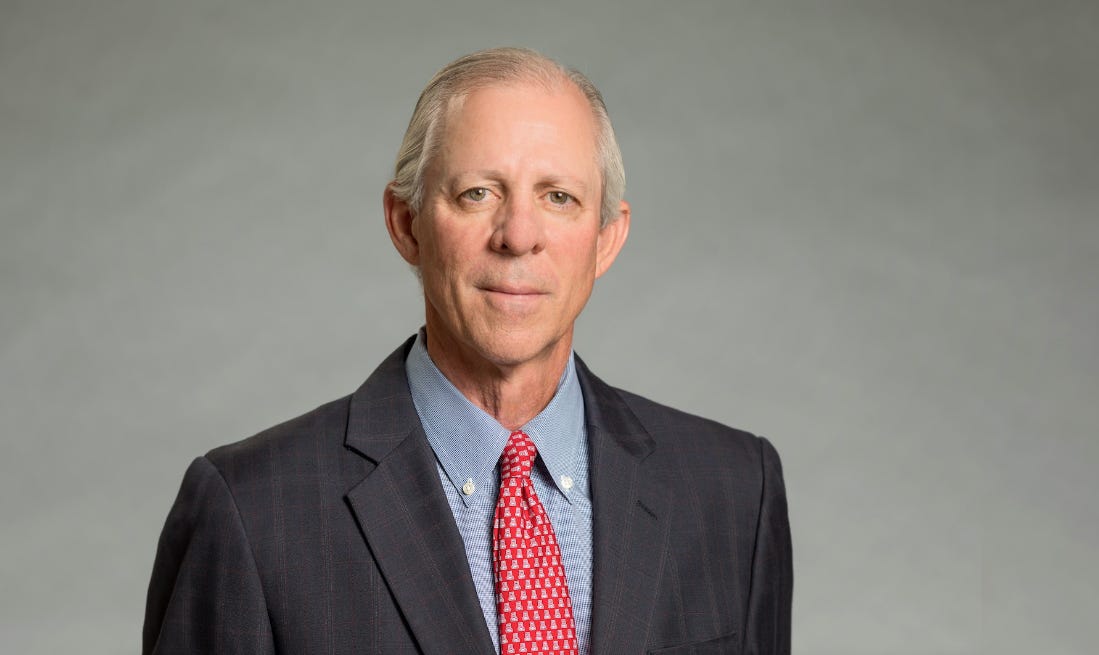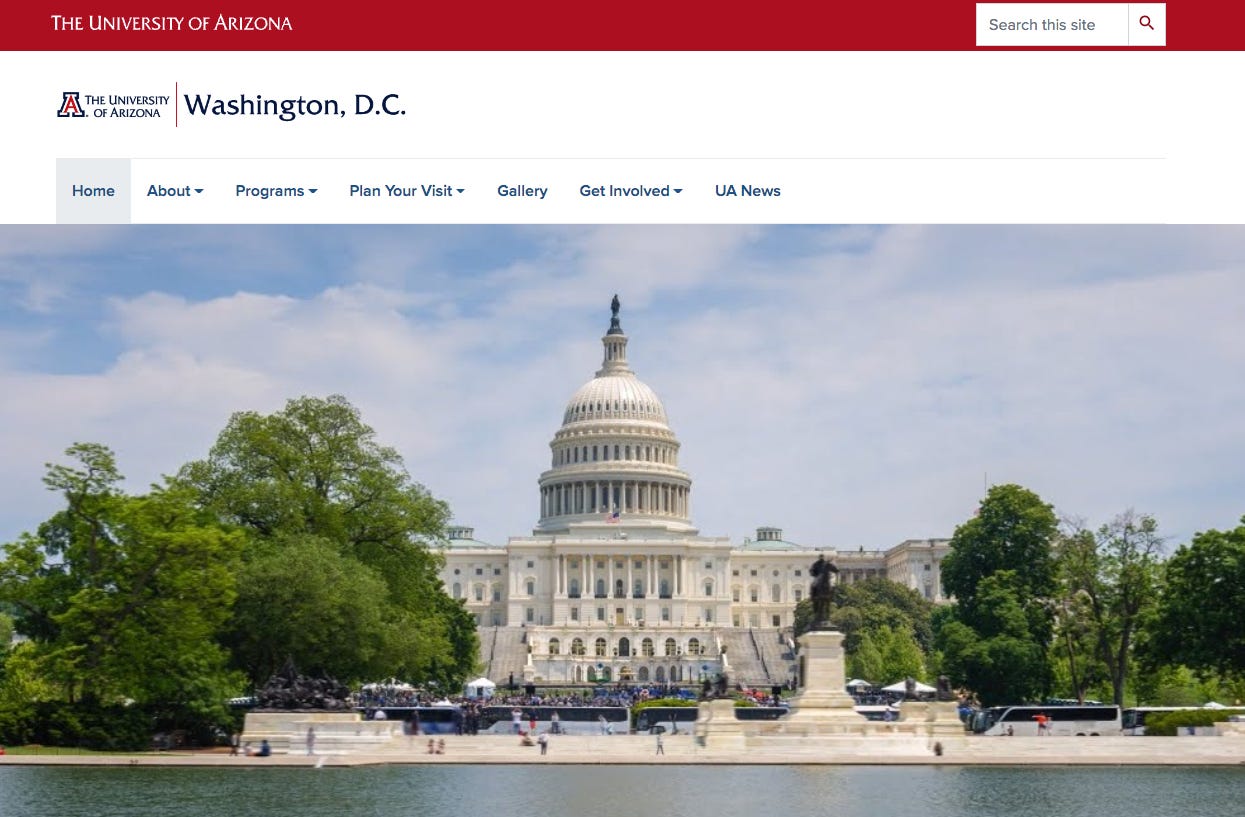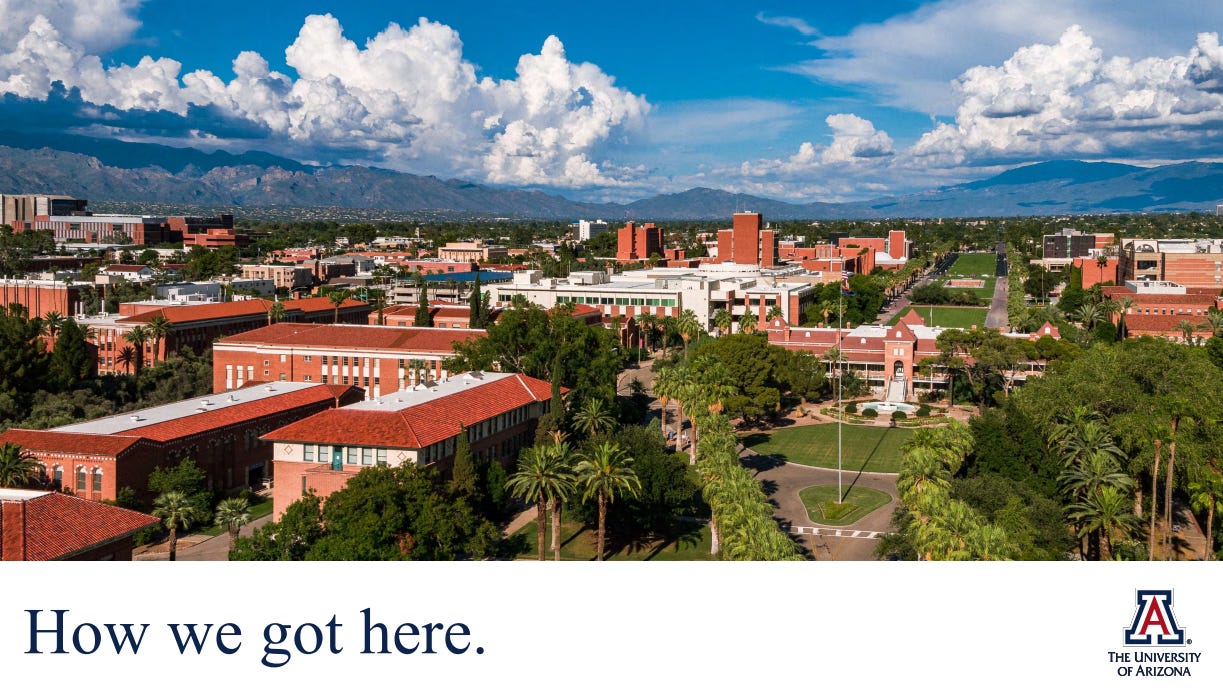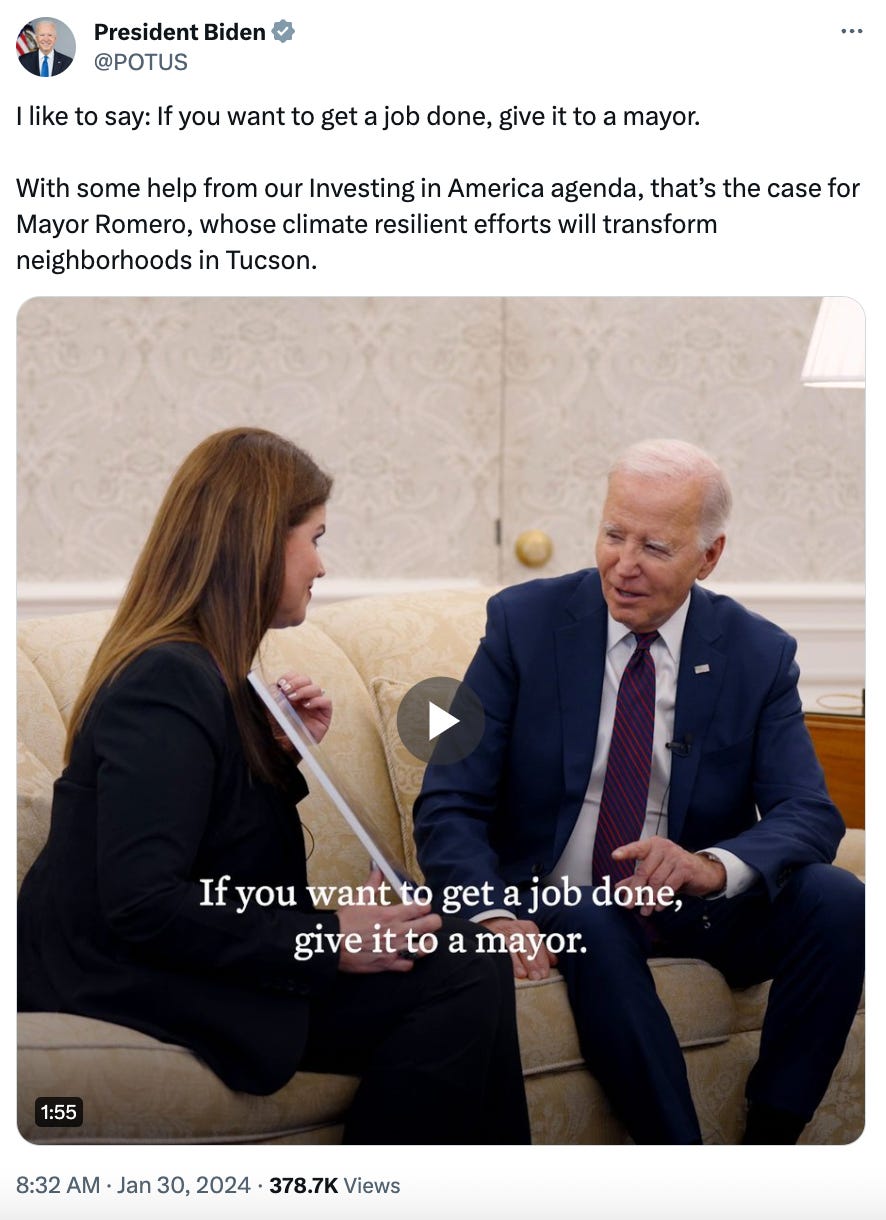The Daily Agenda: UA prez doing just fine
The UA president’s salary has been growing … Along the way, priorities have shifted from students to brand recognition … More families at the border.
The University of Arizona is struggling through a financial crisis, but it should come as no surprise that the man at the center of it all is doing quite well.
There have been no shortage of presentations, discussions and updates about the UA’s finances over the past month, and one phrase that keeps being repeated is “administrative bloat.” We wanted to dig into that and filed records requests for salary data and contracts to get a better look at the size and pay-scale of the UA’s administration.
We decided to start with the man in charge, so today we’re taking a deep dive into UA President Robert C. Robbins’ contracts since his 2017 hiring. You can check out the contracts here (all 107 pages of them) but first, read on for some of our key takeaways.
Last year, Robbins made $954,000 in salary. It’s just one piece of his pie that has grown steadily since he was hired in 2017, even as the finances of the university he oversees started to crumble.
At the time of Robbins’ hiring, his base pay was $600,000. Today, it’s $816,000, and every time he gets a pay raise, the amount of money the university puts into his retirement account also grows. This fiscal year, the UA will contribute 21% of his base pay into his retirement fund, to the tune of an additional $171,000.
The UA also bought a $1.3 million home for him to use back in 2018, and every year, he gets $10,000 for a car. Not too shabby.
If you and 7,000 of your friends buy a paid subscription today, the Agenda will earn about as much as Robbins.
But wait. There's more!
Robbins also gets extra money if he meets specific goals. That’s how his pay rose from his base salary to $954,000.
And in recent years, those goals hint at shifting values at the tippy-top of the university.
When Robbins was hired, the incentives in his contract included a big section focused on students. He would get paid $10,000 for improving graduation rates. Another $10,000 for increasing degrees in high-demand fields. And so on.
But that section disappeared in the 2021 contract and never came back. In its place are incentives focused on expansion and building up the university’s brand, such as $25,000 for leaning on the UA’s office in Washington, D.C. to get federal research money and $30,000 for enhancing the online Global Campus.
Those are the multi-year goals, but Robbins also has short-term goals in his contract. And again, the focus shifted to expansion.
Right now, those goals point him toward establishing a satellite campus in the city of Maricopa, creating a data institute, and centralizing IT services. He’ll get $75,000 for the satellite campus and another $75,000 for the data institute.
As the financial crisis has unfolded over the past few months, there have been calls for Robbins to be fired. That’s up to the Arizona Board of Regents to decide, and they very publicly support Robbins.
“(This) happened under his leadership and we expect him to fix it,” ABOR Chair Fred DuVal said during a Monday financial plan update presentation for UA faculty and staff.
It’s worth noting that if they fire him, they have to pay out the rest of his contract, which runs until June 2026. So the cost could be in the neighborhood of $3 million.
UA Interim CFO and ABOR Executive Director John Arnold laid out the school’s corrective plan during Monday’s meeting, saying their actions will be guided by its purpose, mission and core values.
He said that the plan is to start making cuts from the school’s administration moving towards the goal of cost savings, less bureaucracy and improved outcomes.
“I’ve heard a lot about administrative bloat, and that’s where we’re starting,” Robbins said. “It’s going to take all of us to solve these problems.”
And despite the fact that Robbins is one of the highest paid administrators on campus, we doubt he’s talking about renegotiating his contract to take a pay cut.
Today we focused on Robbins, but we have a ton of information about UA salaries. We’ll report back after we dive into the salaries of other people at the UA who make a bunch of money.
Butting heads: Tucson Electric Power wants to use more renewable energy, and more natural gas, which sparked criticism from environmental groups, the Arizona Daily Star’s David Wichner reports. TEP says the natural gas will offset coal plant retirements and take the place of wind and solar power when the wind isn’t blowing and the sun isn’t shining. Environmental groups want the company to invest in more energy storage for wind and solar power.
Looking back: One of the founders of Oro Valley reflects on the process of establishing the town as the 50th anniversary approaches in April, KGUN’s Kenny Darr reports. Darr sat down with Lauren Rhude, 94, one of the first people to serve on the town council.
"’There were a lot of people who didn’t want it to be incorporated. So we had some real battles,’ he said regarding the hurdles they had to overcome. ‘Council meetings almost came to fisticuffs sometimes because some group didn’t want it, as they had their five to ten-acre parcels.’"
Making plans: The Sahuarita Town Council is holding their annual retreat today and tomorrow where they’ll discuss issues affecting the community, the Tucson Sentinel’s Blake Morlock writes. On the agenda are budget projections and a discussion about the town’s strategic plan, which Morlock says gives them license to talk about pretty much whatever they want. He also cautions that because the budget projections are presented by staff, they don’t always represent the council’s or residents’ priorities.
Breaking records: New federal data shows that families coming to the U.S.- Mexico border greatly increased in 2023, with 220,000 family members coming through the Tucson Sector, Arizona Public Media’s Danyelle Khmara reports. That number represents a 24,000 increase from 2022. A Department of Homeland Security spokesman said earlier this month that there are more displaced people throughout the world and especially in the Western Hemisphere today than at any point in history since WWII.
Room for improvement: The Mount Lemmon Fire station is getting its first remodel since it set up shop off Mount Lemmon Road and General Hitchcock Highway 40 years ago, KGUN’s Mikenzie Hammel reports. Sleeping quarters were added to the station 20 years ago and additional minor upgrades have been made over the years, but this will be the first top-to-bottom makeover in the station’s history. The design, which will improve both amenities and safety measures, has been in the works for about five years.
Safety first: Rio Rico-based storm photographer Lori Grace Bailey talks about her love of the craft and why she doesn’t consider herself a “storm chaser” in a profile with the Green Valley News’ Kevin Murphy. Bailey, whose work has been featured in Backpacker Magazine and Cosmopolitan and who appeared in a segment about the science of lightning on CBS Sunday Morning last year, said that while she enjoys the thrill of the chase, she knows when not to press her luck or test nature and that it’s important to “respect the storm and give it space.”
“So, for me, it's always about getting the best look of the storm,” she said. “The end goal is to come home safely at the end of every day and be able to do that again and not scare my family into thinking that what I'm doing is completely insane.”
$10,000: We already mentioned the money the UA pays Robbins every year for a car. But it’s just such an odd part of the contract to stick around after all these years. Who needs $10,000 for help with car payments when you get paid close to $1 million?











Great work, team. This UA coverage is why I became a subscriber today!
The Robbins story is really disgusting. He's getting $35,000 bonuses for expansion no one asked for while he's preparing to eliminate the jobs or freeze salaries for people making $35,000. Can they camp at his house when they get evicted?